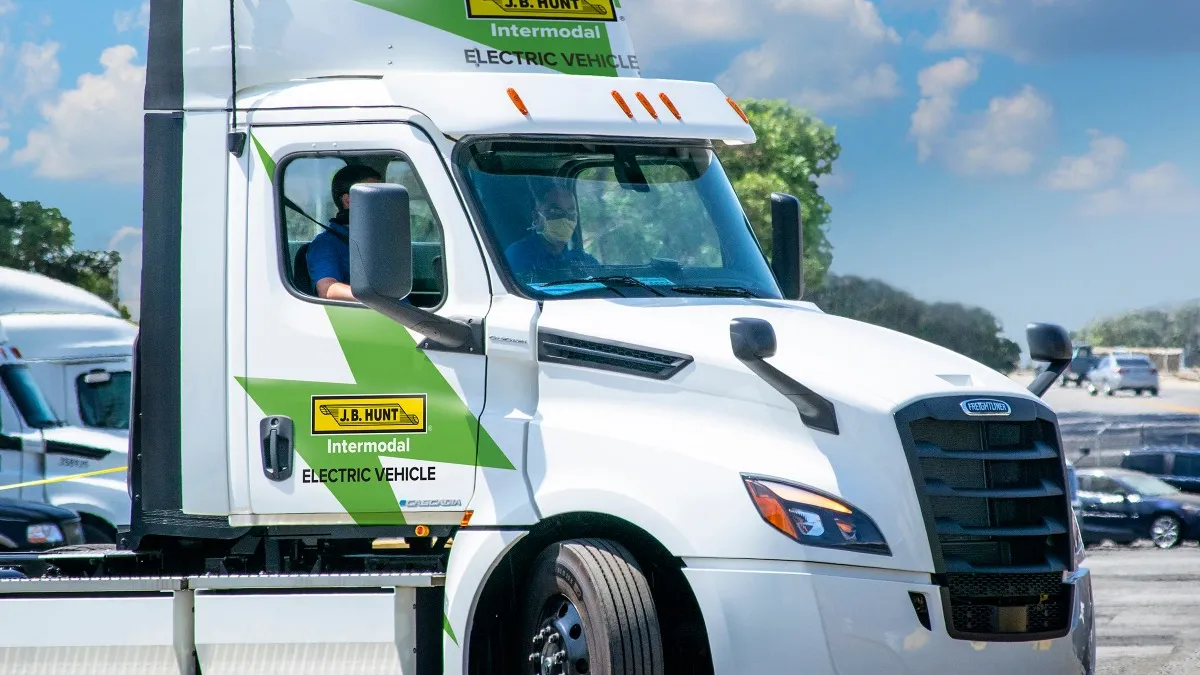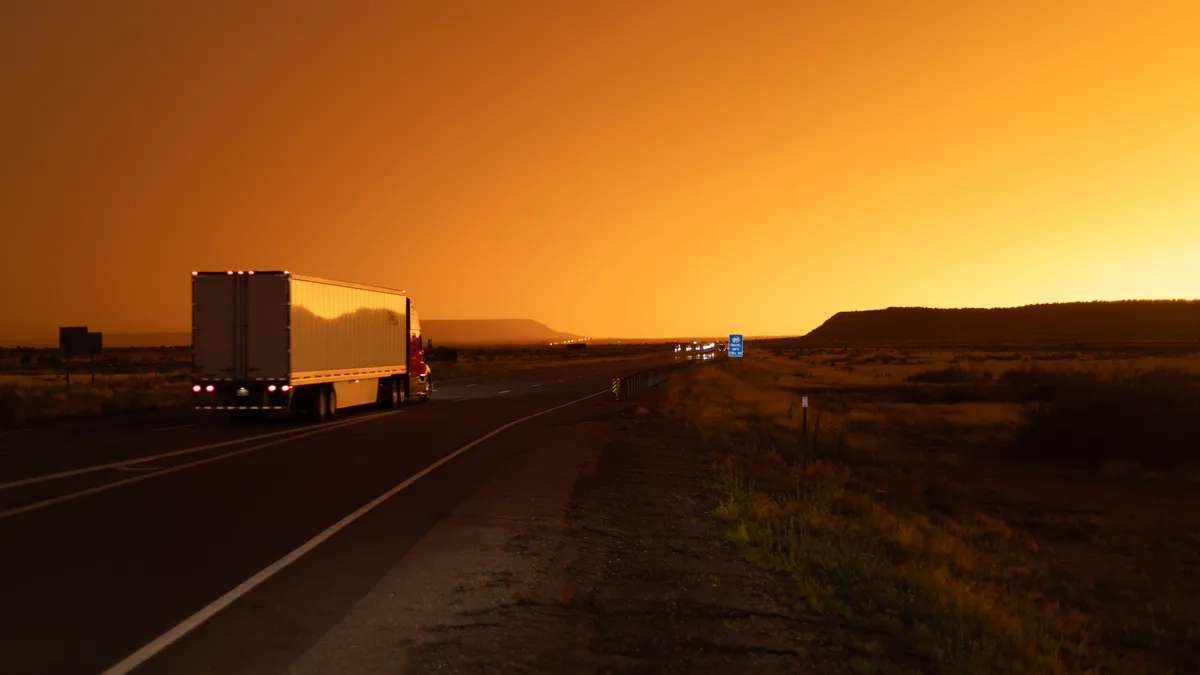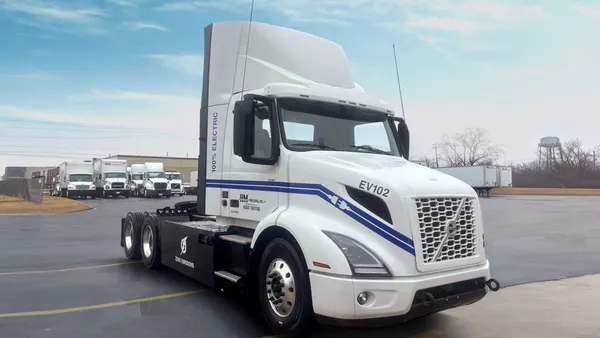Dive Brief:
- J.B. Hunt completed its first delivery using an all-electric Freightliner eCascadia from Daimler Trucks North America, the carrier announced Tuesday. The transport was a 120-mile intermodal haul for Walmart.
- The trip marked the start of a three-month testing phase in which J.B. Hunt is integrating the electric vehicle into day-to-day fleet operations in Los Angeles, the company said. The program is part of DTNA's Freightliner Customer Experience Fleet, in which six heavy-duty eCascadias and two medium-duty eM2s are undergoing pre-series testing with 14 customers via rotational use. DTNA plans to start production on the vehicles in 2022.
- Charging stations have been installed at the Los Angeles terminal, J.B. Hunt said, and drivers are being trained "on an ongoing basis."
Dive Insight:
As sustainability trends in a variety of industries, the race to grab Class 8 EV market share is heating up in transport. Regulatory action and pressure from shippers (Walmart said it "encourages and works with" suppliers to go green) help to accelerate development.
DTNA and other traditional industry players are up against new OEMs. Nikola recently banked an order from a large waste company for at least 2,500 electric trucks, and Tesla is preparing for more Semi customers.
But, as J.B. Hunt recognized in its sustainability report Friday, challenges to reducing scope 1 emissions include "the availability of commercially and economically viable" alternative fuel systems. That encompasses two barriers: range and infrastructure.
"On a full charge, the series-produced eCascadia is expected to have a driving range of up to 250 miles, making it ideal for local and regional distribution and drayage," J.B. Hunt said a statement, adding the engine can recharge up to 80% in 90 minutes.
That range is "ideal for local and regional distribution and drayage," J.B. Hunt said. The Tesla Semi claims it will have a range of "300 or 500 miles," while Nikola claims its sleeper model has an estimated range of 500-750 miles.
J.B. Hunt has a long-term goal of converting at least 25% of its day cab and straight truck fleet to non-diesel by 2035.
California, where EVs can be seen in drayage operations at its southern ports, has long been a leader in emissions-cutting efforts. Charging stations were unveiled at the 2019 Advanced Clean Transportation Expo in Long Beach, California, including Penske Truck Leasing's opening of EV stations with 14 high-speed chargers for heavy-duty trucks at four of its existing facilities in Southern California.
The state's air resources board unanimously passed a rule that aims to ensure every new truck sold in 2045 is zero-emissions — a move 15 states and Washington, D.C., intend to follow.
DTNA launched its Freightliner Customer Experience Fleet, known as the Freightliner CX fleet, in March as part of its Innovation Fleet. Last month, the OEM announced the 30-vehicle, battery-electric fleet of 10 eM2s and 20 eCascadias has accumulated more than 300,000 miles testing in drayage, regional and local delivery, food distribution, and parcel delivery operations.
The 14 customers involved with CX fleet, which collectively represent more than 150,000 Class 6-8 trucks on the road in the U.S., are signed up to test the trucks and give the OEM feedback.












